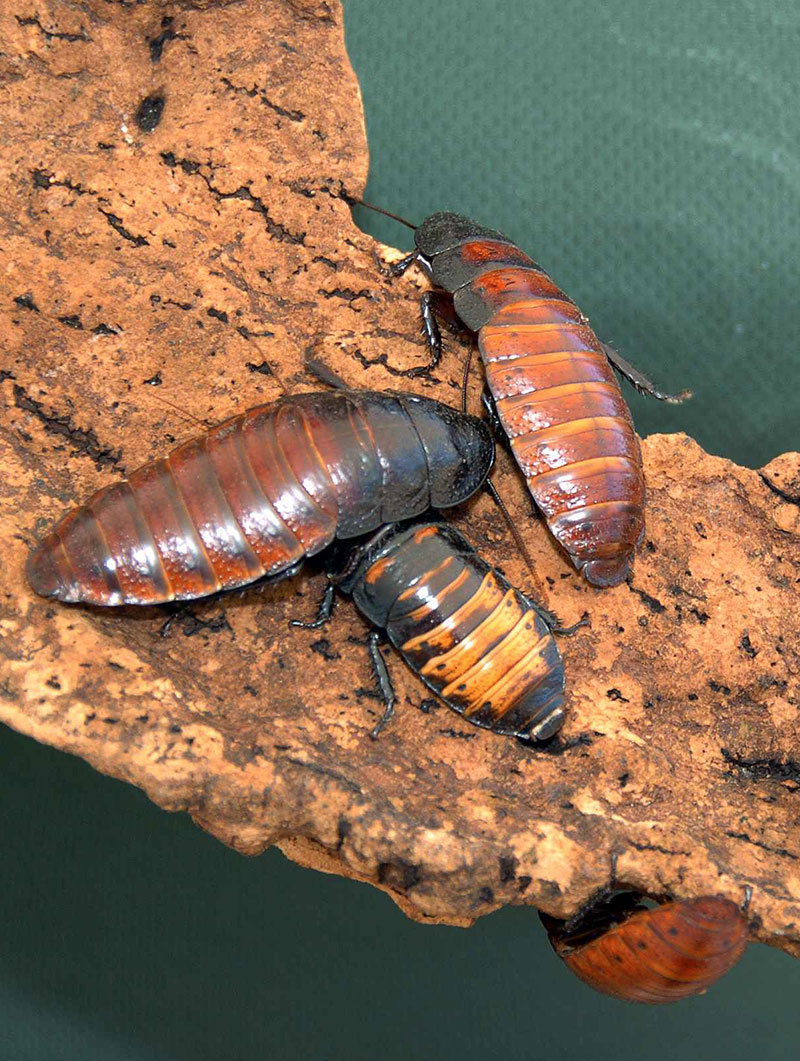Photo by Kmiecik Imagery
Madagascar Hissing Cockroach
Gromphadorhina portentosa
Description:
The Madagascar hissing cockroach is shiny brown in color, with a dark head and legs. Its body is flat and oval shaped. This type of cockroach has very large antennae and no wings.
Size:
Madagascar hissing cockroaches can grow up to 2.5 inches (6.3 cm) long.
Adaptations:
- Both males and females can produce a startling hissing noise by blowing air through holes on the sides of their bodies called spiracles.
They make this sound when disturbed or during aggressive encounters with other cockroaches. - Males have two large bumps on their backs, which are called pronotal horns. They use these “horns” for fighting with other cockroaches, in the same way that deer use their antlers to fight.
Diet:
In their native habitat, Madagascar hissing cockroaches are decomposers, consuming fallen fruit and decaying plant and animal matter. At Cosley Zoo, they are fed fruits, vegetables, and fish flakes.
Reproduction:
Females are ovoviviparous, meaning that they give birth to live young that hatch from eggs inside the female’s body. The female carries the eggs/nymphs for 60 days, after which she gives birth to 30-60 young.
Shelter and space needs:
Hissing cockroaches are native to Madagascar and can be found on the forest floor, often in rotten logs.
Lifespan:
Madagascar hissing cockroaches can live between two and five years.
Relationship with man:
As decomposers, Madagascar hissing cockroaches play an important role in their ecosystem by “recycling” nutrients.
Fun Facts:
- Each Madagascar hissing cockroach has its own characteristic sound, and the cockroaches can distinguish between each other’s hisses.
- There is no odor associated with these cockroaches or their feces.
- Dominant males show off by standing on their toes. This is called “stilting”.
- A female can produce up to 750 young in her lifetime!






